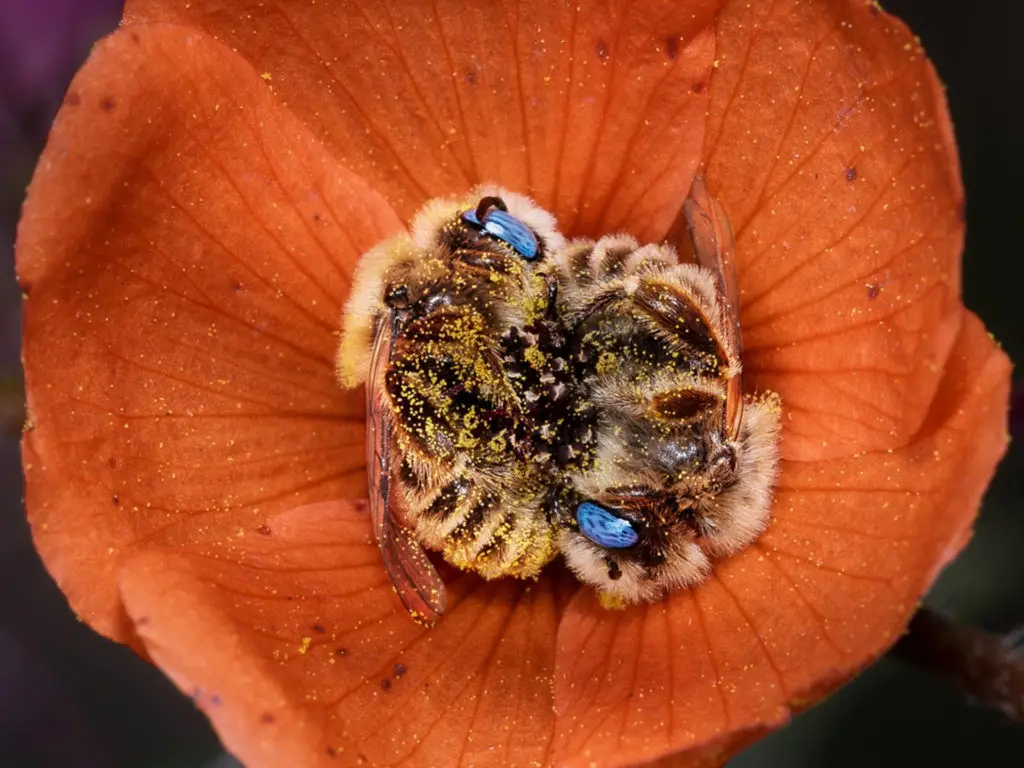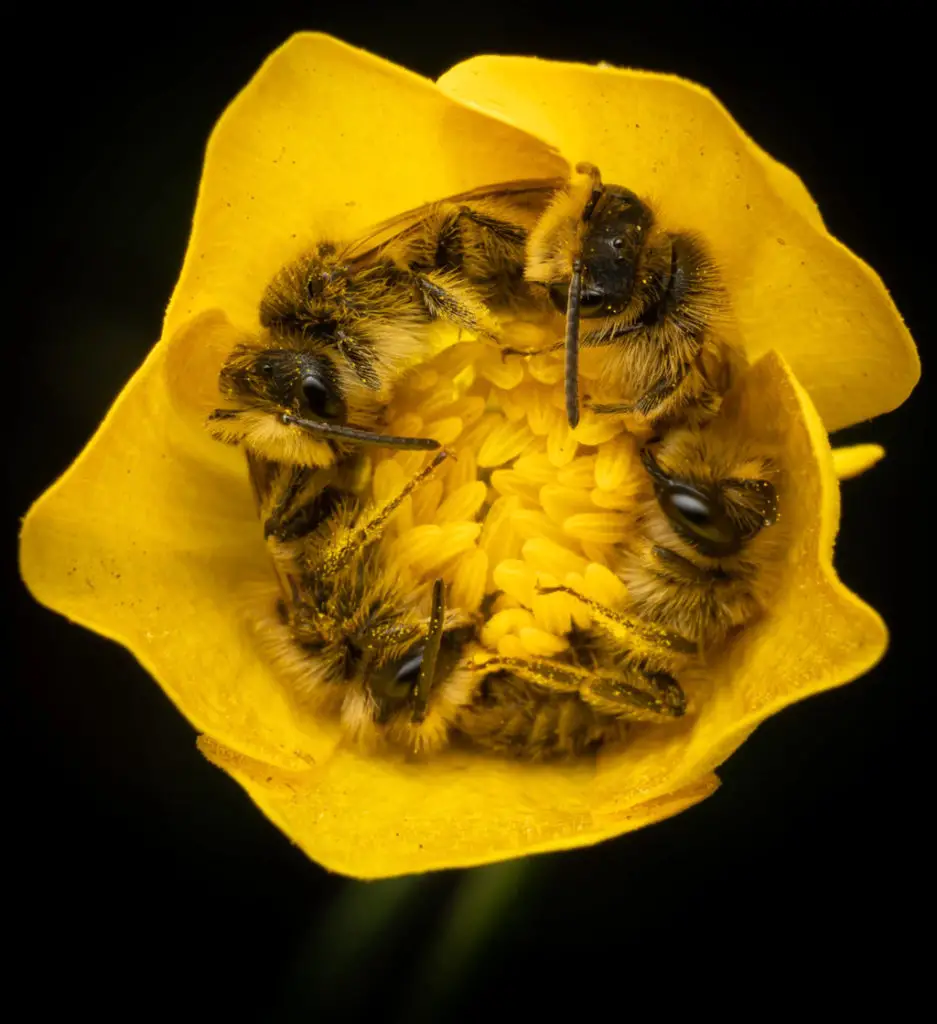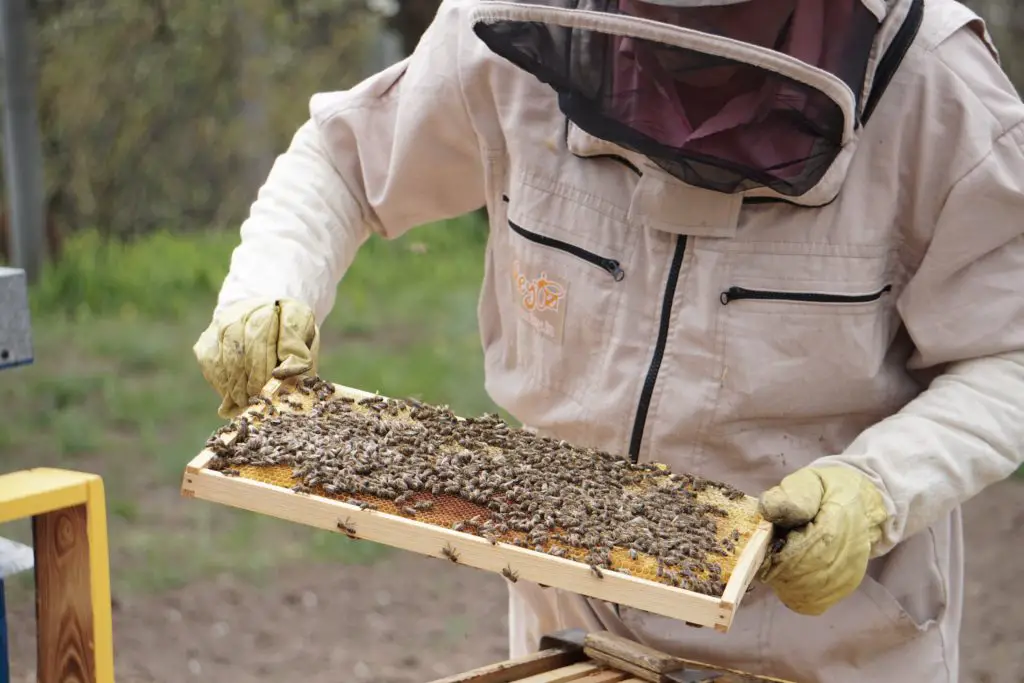Affiliate Disclaimer - As an Amazon Associate I earn from qualifying purchases.
It supports the website. So, Thank you
Bees are among some of the most fascinating creatures on the planet. They might be small but they are hugely intelligent and capable of things that some animals a hundred times their size would struggle with.
One of the things that a lot of people wonder is how bees sleep. There’s a myth that honey bees will ‘hold hands’ while they sleep but surely this can’t be true…do bees hold feet while they sleep?
Amazingly, bees do hold onto each other’s legs or feet when they are sleeping. There are thought to be two reasons for this; the bees legs may weaken when they are resting so fellow bees will hold them to stop them from falling. Secondly, it’s thought that by holding feet, this aids communication when there’s a problem within the hive.
While a lot of us wouldn’t have even thought that bees do sleep, there’s so much interesting information to learn about how these amazingly little creatures rest. So, let’s take a closer look at bee sleep habits.
Table of Contents
Do Bees Sleep?
Just like any other type of animal, a bee needs to refresh its energy levels through resting. Bees might not sleep in exactly the same way as we do but they do go through a period of rest. In fact, scientists have discovered that honey bees will remain in this restful state for between six and eight hours every night.
This sleep-like state enables the bees to not only boost their energy levels, but it’s also thought that it improves their mental capabilities including retaining memories and learning new things.
It wasn’t until the 1980s that proper research went into how bees sleep and this was carried out by Walter Kaiser who discovered the sleeping pattern of bees. Not only this, but he found out that bees would adopt a very specific stance when resting.
A sleeping bee would bring its head towards the floor and keep its antennae very still. Moreover, and perhaps the most fascinating thing about this research was that Kaiser discovered that bees even go through sleep cycles with some parts of their sleep being deeper than others. But while humans and other mammals may experience deep sleep in the later stages of sleep, bees go through this much earlier on in the cycle.
Why Do Bees Hold Legs When They Sleep?
It is a common occurrence for bees to hold onto one another’s legs while they are sleeping. There are even some species of bees that will snuggle up with a partner when it’s time to get some shut eye; how cute!
But there has to be a reason for this behavior, so why do bees hold legs while sleeping? It’s mainly to do with supporting one another. Bee communities are incredibly close knit and these little critters stick together through everything; including sleep.
Since the bee may become unsteady on its feet when sleeping, it is believed that they’ll hold legs to stop one or more bees from falling over. There has also been some suggestion that bees will hold onto one another to improve communication. If there is a hive emergency, having this direct physical contact allows the bees to alert each much more easily.

Where Do Bees Like To Sleep?
Did you look at those cuddled-up sleeping bees in the last section? Well, sleeping in flowers is common practice for some bees. However, honey bees will typically sleep somewhere within the hive. But don’t forget that inside that hive, it’s…well, a hive of activity so finding a quiet spot to rest might not appear all that easy.
Most bees will head to the outer parts of the comb where the activity is not quite as strong as this gives them the best chance of rest. As bees get older, they require more sleep and so will spend longer resting than their young counterparts.
What’s really cute is that some bees will stay within the thick of it but choose an empty wax cell to climb in and take a snooze!
When Do Bees Sleep?
Bees usually sleep at night although it is possible to see a bee having a quick power nap outside of the hive during the day. When this happens, the bees are often easily disturbed and so will have a quick clean up and move on.
But for the most part, honey bees will return to the hive and find a quiet spot to get some shut eye. That said, the hive doesn’t just go quiet at night; this is an environment that’s always buzzing. Some bees will sleep while others are still working away. Since it is always dark in the hive, bees don’t rely on light to guide their rhythm.
It is typically the forager bees that sleep at night while other bees will keep working and take naps throughout the day. Generally, these forager bees will spend between six and eight hours a night resting.
Do Bees Dream?
It was once thought that only mammals dreamed. Dreaming is a result of memory reactivation during a period of sleep but science has now shown us that this is also something experienced by bees.
There are several reasons for this but one thing that you must understand is the complexity of the bee brain. With more than one million neurons, bees are much more intelligent and complex than other creatures of a similar size. Yes, they have far less neurons than the average mammal but still have more than enough for basic decision making and problem solving.
While there may still be a lot of research needed into bee dreaming, one scientist discovered that bees will move their antennae in a specific way during their equivalent of REM sleep which would suggest that they are dreaming.
Conclusion
When you open a beehive, you might notice there are some motionless bees around the edges and this is likely because they are sleeping. Bees need rest just as much as me and you and they’ll have a good few hours of sleep every night.
What’s really amazing about how bees sleep is that they’ll hold legs in order to support each other. So, next time you look at your bees, just approach with caution as you don’t want to interrupt their sweet dreams!




